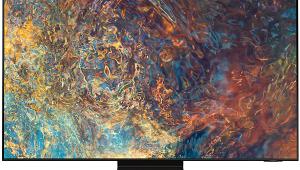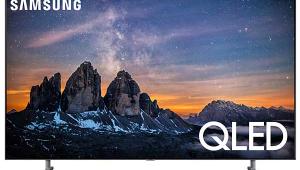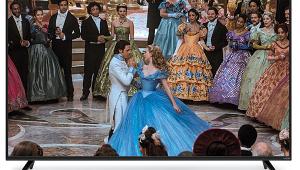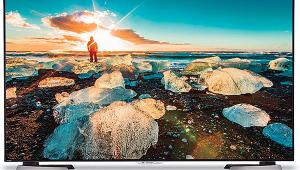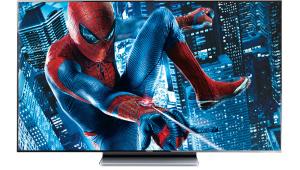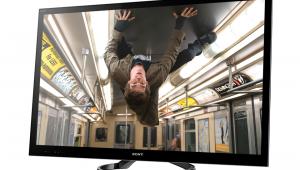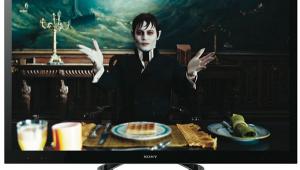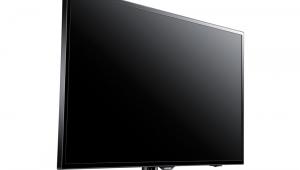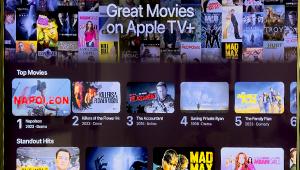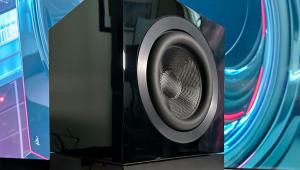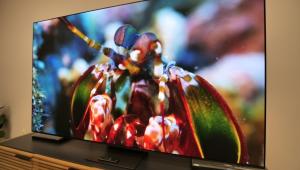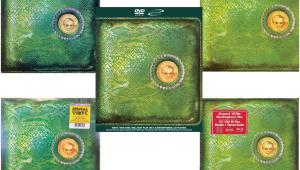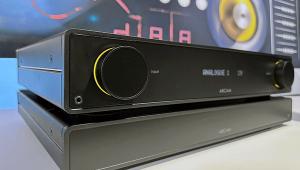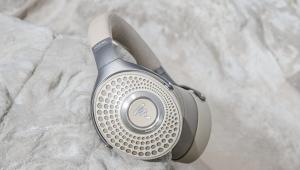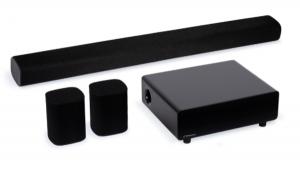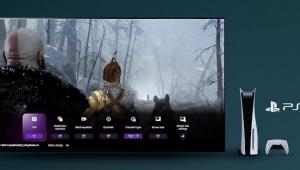Test Report: Sharp Elite PRO-60X5FD 3D LCD HDTV Page 4
Test Bench
Color temperature (THX Movie mode before/after):
20-IRE: 6,331 K/ 6,686 K
30-IRE: 6,438 K/ 6,529 K
40-IRE: 6,336 K/ 6,541 K
50-IRE: 6,415 K/ 6,567 K
60-IRE: 6,454 K/ 6,627 K
70-IRE: 6,412 K/ 6,604 K
80-IRE: 6,402 K/ 6,541 K
90-IRE: 6,365 K/ 6,462 K
100-IRE: 6,328 K/ 6,384 K
* Spectracal’s CalMan Professional monitor calibration software (spectracal.com) was used during the calibration and measurement process. See the PDF link below for a complete report with detailed pre- and post-calibration results.
The Elite PRO-60X5FD’s Movie THX (Low color temperature) mode delivered the most accurate grayscale and color points of the set’s many picture presets. Before calibration, color temperature averaged around 6,394 kelvins. After calibration (also in Movie THX mode), color temperature averaged 6,532 K. Primary color points measured very close to the HD standard before calibration, although the cyan and magenta secondary colors were somewhat off-target. The set’s extensive CMS (color-management system) adjustments let me correct the cyan/magenta errors during calibration, however.
Gamma in the Movie (THX) mode’s default setting measured the 2.2 target almost exactly and remained very linear throughout the set’s full brightness range. After calibration (with local dimming on), the set’s black level measured 0.001 ftL and brightness 39.43 ftL, for a contrast ratio of 39,430:1. With local dimming off, black level measured 0.020 ftL and brightness 38.19 ftL, for a contrast ratio of 1,910:1. Picture uniformity was excellent, with full-field patterns at all grayscale steps.
The set displayed full picture resolution for all signal formats delivered via HDMI and component-video inputs, though 480i-rez patterns looked slightly soft. Motion-resolution tests revealed a full 1,200 lines with the 120Hz High and Fluidmotion Motion Enhancer settings enabled. The set’s performance on film and video deinterlacing tests was somewhat mixed. It displayed noise in the film resolution test from the HQV Blu-ray — a shortcoming that was corroborated by 1080i-format film clips, which showed occasional flashes of moiré. Its Digital Noise Reduction feature proved effective, although the medium and high settings both introduced picture softening when applied to standard-def signals.—A.G.
Bottom Line
The Elite PRO-60X5FD’s overall performance easily counts it among the best TV options — if not
- Log in or register to post comments
